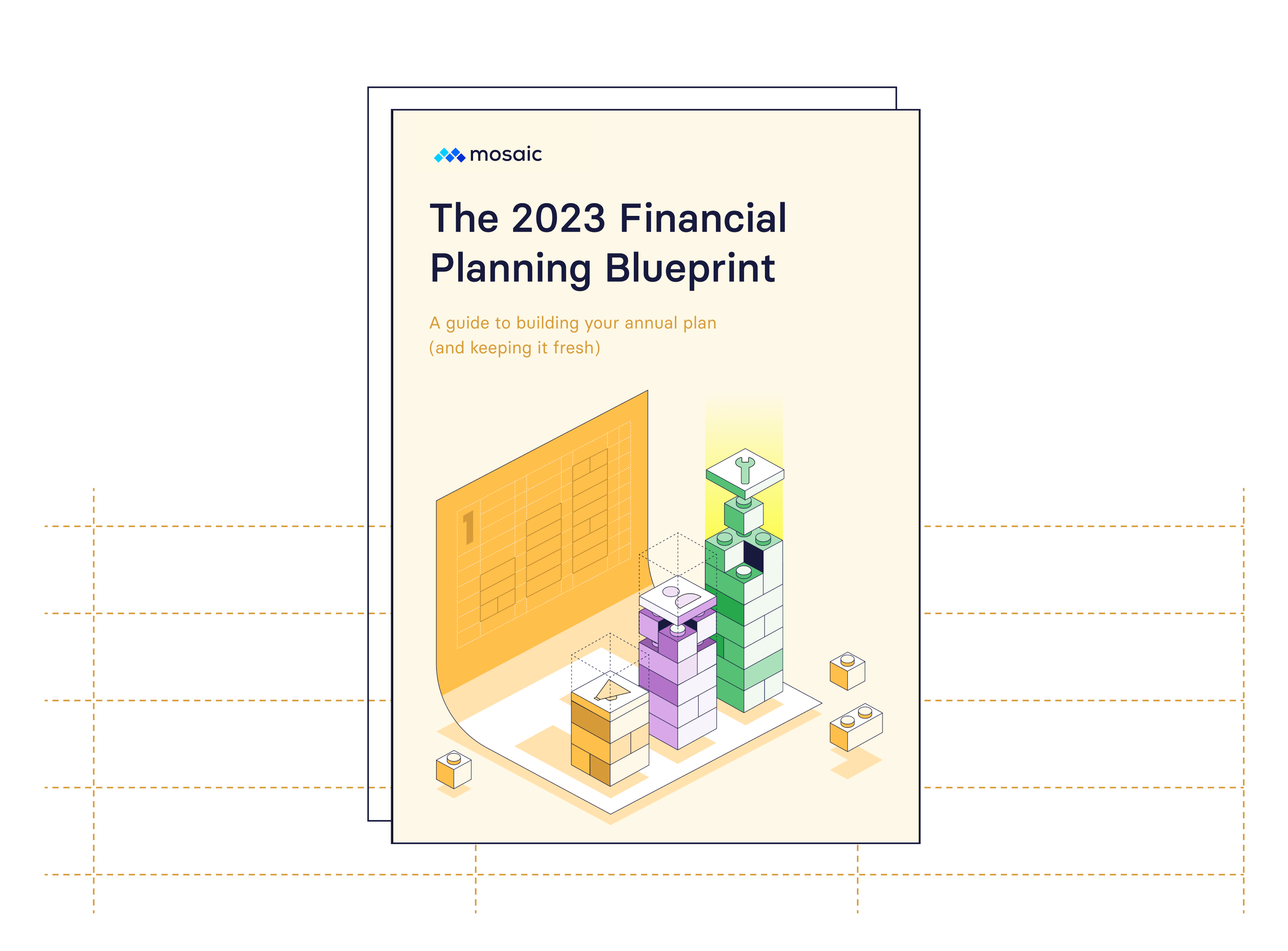The driver-based approach aligns finance with the rest of the business by creating a framework for planning around operational results. It’s essential to finance’s shift from backward-looking scorekeeper to forward-looking strategic advisor to business partners and key stakeholders.
But revamping planning, budgeting, and forecasting to focus on drivers rather than financial assumptions alone isn’t easy.
If you want to succeed with driver-based planning, take the right steps to get drivers and assumptions working together to provide real-time feedback on how you’re tracking against forecasts and budgets.
Table of Contents
What Is Driver-Based Planning?
Driver-based planning, or driver-based forecasting, is a process for understanding business performance based on particular value-drivers that are most important to an organization.
Building financial models around these value drivers s keeps all strategic budgeting and planning processes focused on answering two main questions:
- How are we going to grow as a business?
- How is that growth going to produce desired results?
Drivers vs. Assumptions in Driver-Based Planning
If you’ve ever tried (and failed) to implement rolling forecasts in your organization, poor driver/assumption construction might have been to blame. That’s why effective driver-based planning starts with understanding the difference between drivers and assumptions.
Your assumptions are based on historical data from the prior 3, 6, or 12 months. You can update them as your business evolves, but they aren’t as dynamic as true business drivers in a model. A few examples of common assumptions that you could build into your model include:
- Quota per sales rep
- Quota attainment for the sales team
- Sales rep ramp rate
- Sales rep attrition rate
These assumptions work in conjunction with key business drivers to logically model out the goals you’re striving to achieve. Drivers, compared to assumptions, are elastic. They’re scalable inputs for the model—levers you can pull to influence business performance outputs. There are two main characteristics of effective drivers.
- They’re values you directly control. Drivers should be inputs that you can increase or decrease with a high level of certainty in scenario analysis. For example, you can fully control sales headcount as a driver of revenue growth. You know that each new head will increase financial performance. Factor in their ramp rate as a driver to help calculate when you can expect improvements in sales pipeline metrics.
- They have minimal diminishing returns. Drivers should also scale alongside your business. In the sales headcount example, each additional hire should drive a consistent increase in expected revenue growth. Compare that to something like quota attainment. There’s a limit to how much you can increase quota before attainment becomes impossible. That’s why quota attainment is an effective assumption rather than a driver.
Having a strong grasp on what’s a driver versus what’s an assumption is important. But the real value of driver-based planning comes when you effectively link the two together as you build out planning models and reporting processes.
How to Build a Driver-Based Forecast in 3 Steps
There are three high-level steps involved in building a driver-based forecast that effectively links drivers and assumptions to create business plans. The diagram below shows how the logic works out when you follow these steps.

First, you need to align on the overarching business goals that you’re trying to model out. Then, you need to identify the quantitative KPIs that will measure those goals.
The third step is the most significant part of the forecasting process, where you break those KPIs down into key drivers, assumptions, and results in your model. But once you do that, you can use the metrics to create tactical execution plans for business units and reflect these in your financial statements, which improves your understanding of the company’s bottom line.
1. Define the Qualitative Business Goals
The driver-based modeling process starts with business outcomes. Not quantitative outcomes like in traditional planning when you might say, “we’re going to grow 20% in the next quarter.” But rather, driver-based planning begins with alignment on qualitative business goals.
You can start with an understanding that you’re pursuing high-level goals like driving revenue growth, increasing profitability, or reducing churn.
Business goals are more complex than this. But it’s important to resist the urge to create a long list of goals that will eventually complicate your models.
You want to establish a driver-based plan that leads to reports that are digestible for business leaders outside of finance.
So much of the reporting process is about getting buy-in from people outside of finance — getting them to a place where they feel like they have a strong grasp on business performance. Limit the number of high-level goals you’re planning for so you work your way toward a manageable set of operational drivers, assumptions, and KPIs.
2. Identify the Quantitative KPIs to Measure Those Goals
Once you have your high-level qualitative goals, you can map them to quantitative metrics that will help you measure them in a model.
For the examples above, your metrics might be revenue growth percentage, net profit, and gross revenue retention.
Setting the qualitative and quantitative sides of your business goals gives you the baseline necessary for driver-based planning. Then you can dig into the real work of establishing drivers, assumptions, and results in your model.
3. Break Down KPIs into Drivers, Assumptions, and Results
The most important step of driver-based planning is modeling out the drivers and assumptions that will help you forecast results that achieve your business goals.
If you link everything together effectively, you should have a small number of drivers that produce the majority of your planning results. And it should also ensure the levers of your plans work together, so that misses in the forecast balance out naturally.
Take growth as an example goal. The quantitative KPI you want to model out is revenue growth percentage.
Here’s how the example above breaks down:
- Driver: Total number of account executives/sales reps is the clearest driver of revenue growth for a sales-led business. You know how much additional revenue to expect from each new hire.
- Assumptions: The assumptions that create the logic for that driver are things like quota, sales ramp, rep attrition, and quota attainment. When you miss projections, it’s because your assumptions were off. Maybe you miscalculated the sales rep ramp and need to revisit. Zero in on roughly accurate assumptions to create the logic structure for accurate drivers.
- Results: When your assumption logic is close to accurately reflecting the business, your drivers will lead to desired results in the plan. In this case, the results of AE count as a driver are new bookings, revenue growth, and number of customers added.
You can carry out this same kind of breakdown for other business goals.
For free cash flow and profitability, your drivers could be revenue from existing customers and revenue from new customers. Break those drivers into assumptions such as G&A expenses as a percentage of revenue, R&D as a percentage of revenue, and average cost per head to cover standard expenses. The result is a clear plan for operating margins and the number of heads you can hire across G&A and R&D functions.
These are basic examples, but you can extend the same logic to more advanced cases as well. Maybe you’re planning to invest heavily in R&D, so you want a more granular level of detail for expenses in that area.
You could use product features per release as a driver. Then, your assumptions could be the number of engineers required to release one feature and average salary per head. Those assumptions result in your R&D headcount, which you can average out to overall R&D expenses.
How Driver-Based Models Become Tactical Execution Plans
You don’t go through the process of driver-based planning just for the sake of creating a financial forecast or projection. Use the steps above to put your team in a position to play a strategic role in the business by turning the KPI breakdowns into tactical plans for each department.
For example, if you know you need to hit 90% gross retention to meet the plan and you only have 50 customers, then you can only stand to lose 5 customers for the forecast period. Work with customer success to create a plan to stay within that plan.
You could break down customers into green, yellow, and red statuses. See how your customer base grades out. How many customers in the red and yellow would you need to pull into green in the next quarter to meet the plan?
These are the kinds of practical planning processes you can run with a driver-based approach to forecasting and budgeting.
Unlock the Benefits of Driver-Based Planning for Agile Strategic Finance
The steps listed above aren’t easy to execute. It’s why so many CFOs, FP&A teams, and finance teams at large remain stuck in reactive planning and budgeting processes that limit their strategic value.
For your finance team to successfully implement driver-based planning, you need dedicated efforts to:
- Understand how the business has performed historically so you can get the necessary context for driver-based models and FP&A models (which can be easier said than done).
- Put in the ongoing time and effort necessary to maintain that clear visibility into actuals and understanding of historical performance.
- Analyze the “why” behind historical context to set driver-based plans in the right direction.
- Get the people and processes in place to hold the business accountable to driver-based plans. (Just because you have an actionable driver-based plan doesn’t mean the business will use it in practice.)
Your ability to implement driver-based planning comes down to how efficiently you can fulfill these priorities. How quickly can you organize your historical data? How soon can you get the people and processes in place to maintain a driver-based planning process?
Finance is constantly asked to do more with less, which is why Excel spreadsheets that take so much time to build and maintain aren’t good enough to support driver-based planning. Want to see how Mosaic can give you real-time visibility into your financial data to enable more flexible planning processes and agile decision-making? Get a personalized demo and put yourself on the path to agile financial planning.
Understand the Impact of Every Decision with Modeling Software
Driver-based planning FAQs
What is driver-based forecasting?
Driver-based forecasting is another term for driver-based planning, and it refers to the process of projecting business results and performance based on scalable inputs you directly control.
What are the benefits of driver-based planning?
What is an example of driver-based planning?
Own the of your business.


